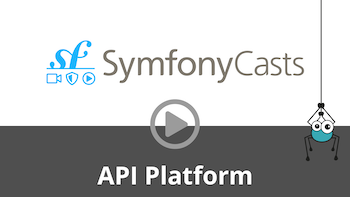# Subresources
A subresource is a collection or an item that belongs to another resource.
API Platform makes it easy to create such operations.

Watch the Subresources screencast
The starting point of a subresource must be a relation on an existing resource.
For example, let's create two entities (Question, Answer) and set up a subresource so that `/question/42/answer` gives us
the answer to the question 42:
```php
id;
}
// ...
}
// api/src/Entity/Question.php
namespace App\Entity;
use ApiPlatform\Core\Annotation\ApiResource;
use ApiPlatform\Core\Annotation\ApiSubresource;
use Doctrine\ORM\Mapping as ORM;
/**
* @ORM\Entity
* @ApiResource
*/
class Question
{
/**
* @ORM\Column(type="integer")
* @ORM\Id
* @ORM\GeneratedValue(strategy="AUTO")
*/
private $id;
/**
* @ORM\Column
*/
public $content;
/**
* @ORM\OneToOne(targetEntity="Answer", inversedBy="question")
* @ORM\JoinColumn(referencedColumnName="id", unique=true)
* @ApiSubresource
*/
public $answer;
public function getId(): ?int
{
return $this->id;
}
// ...
}
```
```yaml
# api/config/api_platform/resources.yaml
App\Entity\Answer: ~
App\Entity\Question:
properties:
answer:
subresource:
resourceClass: 'App\Entity\Answer'
collection: false
```
Note that all we had to do is to set up `@ApiSubresource` on the `Question::answer` relation. Because the `answer` is a to-one relation, we know that this subresource is an item. Therefore the response will look like this:
```json
{
"@context": "/contexts/Answer",
"@id": "/answers/42",
"@type": "Answer",
"id": 42,
"content": "Life, the Universe, and Everything",
"question": "/questions/42"
}
```
If you put the subresource on a relation that is to-many, you will retrieve a collection.
Last but not least, subresources can be nested, such that `/questions/42/answer/comments` will get the collection of comments for the answer to question 42.
Note: only for `GET` operations are supported at the moment
## Using Serialization Groups
You may want custom groups on subresources, you can set `normalization_context` or `denormalization_context` on that operation. To do so, add a `subresourceOperations` node. For example:
```php
GET
foobar
```
In the previous examples, the `method` attribute is mandatory, because the operation name doesn't match a supported HTTP
method.
Note that the operation name, here `api_questions_answer_get_subresource`, is the important keyword.
It'll be automatically set to `$resources_$subresource(s)_get_subresource`. To find the correct operation name you
may use `bin/console debug:router`.
## Using Custom Paths
You can control the path of subresources with the `path` option of the `subresourceOperations` parameter:
```php

